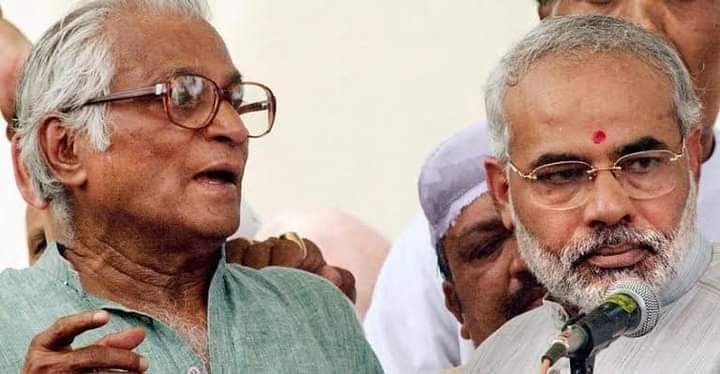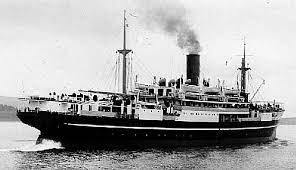
Andhra Ratna
#DiggiralaGopalakrishnaiah
The Freedom Fighter in this image was an Economic Post-Graduate from Edinburgh University.
Surprised? Read On...
He passed away at a young age of 39 & in poverty after spending everything he earned for Gandhi & Congress.
Please do read

#DiggiralaGopalakrishnaiah
The Freedom Fighter in this image was an Economic Post-Graduate from Edinburgh University.
Surprised? Read On...
He passed away at a young age of 39 & in poverty after spending everything he earned for Gandhi & Congress.
Please do read


about the legend who formed a Swayamsevak Sangh & named it on Shree Rama.
A small tribute to a remarkable Sanatani on his jayanti.
He was born in Penuganchiprolu village in Krishna district on June 2, 1889 into a Brahmin family. His father was Kodandaraamaiah and mother was
A small tribute to a remarkable Sanatani on his jayanti.
He was born in Penuganchiprolu village in Krishna district on June 2, 1889 into a Brahmin family. His father was Kodandaraamaiah and mother was
Seetamma. He studied in high schools in Gunturu and Bapatla town.
He went to England for higher studies. After graduating with MA degree from Edinburgh University, he worked with Ananda Kumaraswamy for some time and translated Nandikeswara' s Abhinaya Darpanamu from Sanskrit
He went to England for higher studies. After graduating with MA degree from Edinburgh University, he worked with Ananda Kumaraswamy for some time and translated Nandikeswara' s Abhinaya Darpanamu from Sanskrit
into English titled, "The Mirror of Gesture" published by Cambridge-Harvard University Press in 1917.
After a brief tenure as a lecturer at Rajamandri Training College and Bandaru National College, he jumped headlong into freedom struggle. In 1919, British government unified
After a brief tenure as a lecturer at Rajamandri Training College and Bandaru National College, he jumped headlong into freedom struggle. In 1919, British government unified
Cheerala and Perala municipalities into one municipality. Gopalakrishnayya called for a non-cooperation movement against this action. This movement became one of the most important milestones in the Andhra freedom struggle. He traveled extensively in Andhra, after attending the
Calcutta Congress in 1920, he was attracted to the programme of Non-co-operation and resolved to dedicate his life to the achievement of Swaraj. For this purpose he trained thousand disciplined band of warriors and gave them the name `Ramadandu'.
Gopalakrishnayya was an ardent
Gopalakrishnayya was an ardent
devotee of Shree Rama & hence he formed a volunteer group called "Ramadandu," which was a well-organized, patriotic and spiritual organization.
He was awarded the title "Andhra Ratna (Gem of Andhra) by the people in 1921 at a meeting in Gunturu.
In 1921 the Congress held its
He was awarded the title "Andhra Ratna (Gem of Andhra) by the people in 1921 at a meeting in Gunturu.
In 1921 the Congress held its
annual session at Vijayawada where the Rama Dandu played a prominent role in organising it. Members of the Dandu wore saffron clothes and donned rudraksha beads and vermilion and they participated in the meeting in large numbers.
After the All-India Congress session at
After the All-India Congress session at
Vijayawada, Gandhi came to Chirala.
Gopalakrishnayya sought his advice on the future course of action to be taken. MKG suggested two alternatives, (1) to continue the No-Tax Campaign in a non-violent manner and (2) mass exodus of people to the vacant areas beyond the municipal
Gopalakrishnayya sought his advice on the future course of action to be taken. MKG suggested two alternatives, (1) to continue the No-Tax Campaign in a non-violent manner and (2) mass exodus of people to the vacant areas beyond the municipal
limits.
The second would automatically end the municipality. But he made it clear that whatever course they chose the Congress would bear no responsibility and that they must stand on their own legs. Gopalakrishnayya had enough confidence in himself and the people, and in
The second would automatically end the municipality. But he made it clear that whatever course they chose the Congress would bear no responsibility and that they must stand on their own legs. Gopalakrishnayya had enough confidence in himself and the people, and in
spite of the warning, he persuaded the residents to move to the area outside the municipal limits and raise temporary tenements which he called `Ramanagar'.
It was an unprecedented step in the history of the country.
Nearly 13,000 out of the town's total population of 15,000
It was an unprecedented step in the history of the country.
Nearly 13,000 out of the town's total population of 15,000
responded to his call and shifted to a new settlement called Ramanagar where he set up an assembly comprising members from all castes and a court of arbitration. Gopalakrishnayya and the Rama Dandu worked to keep up the morale of the people and this establishment continued for
a period of eleven months. Ultimately a combination of dwindling finances, the arrest and imprisonment of Gopalakrishnayya at Trichy and the absence of leaders to continue the struggle in the absence of Gopalakrishnayya led to the winding up of Ramanagara.
Gopalakrishnayya was diagnosed with advanced tuberculosis in 1926 and spent much of his last days in poverty and suffering. The legend attained moksha on 10 June 1928, aged 39.
#ForgottenHeroes
#VandeMataram
#ForgottenHeroes
#VandeMataram

• • •
Missing some Tweet in this thread? You can try to
force a refresh























